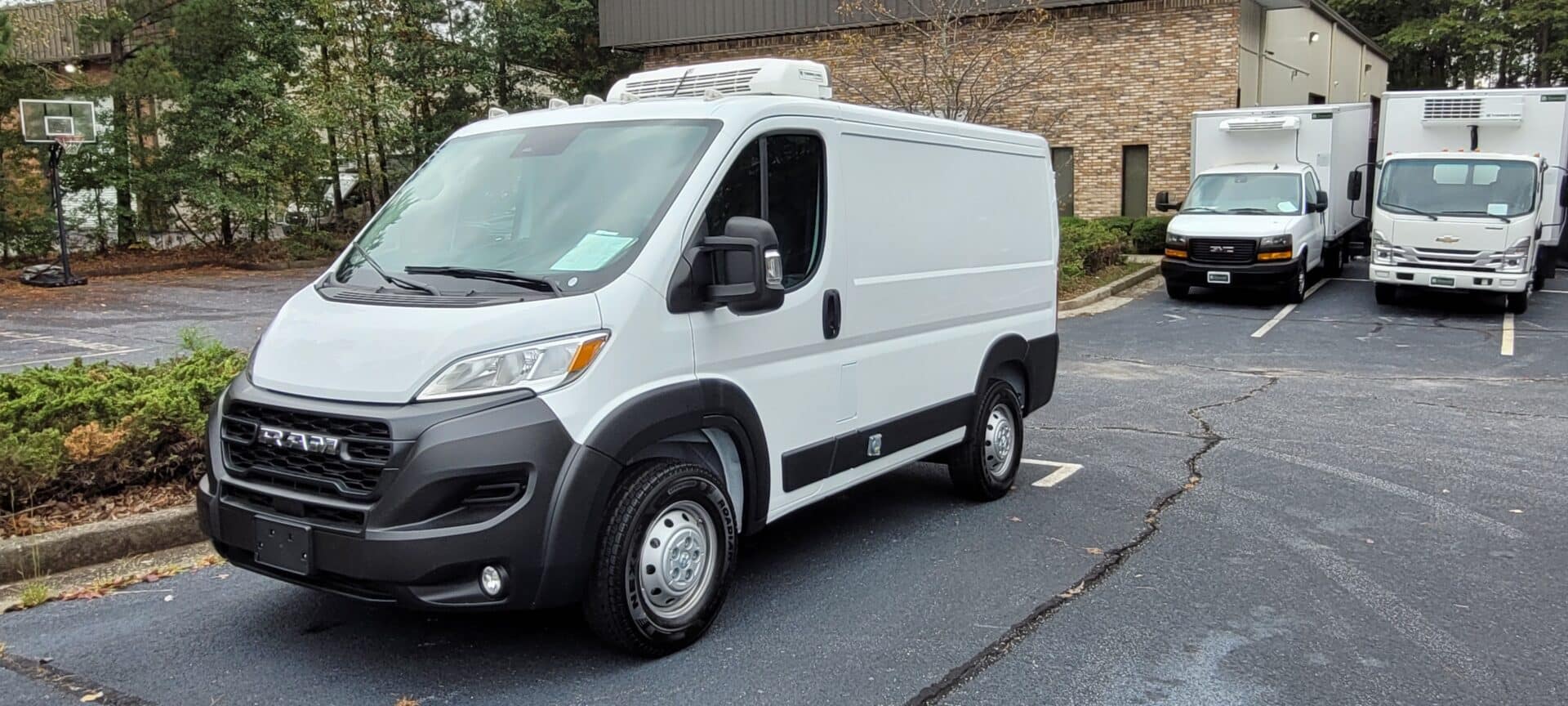
Selecting the Right Refrigerated Delivery Truck
Todd Cawley | December 1st, 2023
Transporting perishable goods is a task that requires precision and attention to detail, especially when it comes to maintaining the correct temperature inside your refrigerated truck. So, how do you know what the ideal temperature is for your needs?
The proper temperature for a refrigerated delivery truck varies based on the type of product being transported. Goods such as fresh produce, dairy products, or flowers usually require temperatures ranging from 0°C to 4°C (32°F to 39.2°F). On the other hand, frozen goods such as ice cream or meat need much lower temperatures, often around -18°C (0°F).
Why is maintaining the correct temperature so crucial? Temperature deviations can drastically affect the quality and safety of the products. Therefore, precise internal temperature control is critical to avoiding spoilage, contamination, and potential financial losses.
To ensure temperature consistency, consider purchasing a top-quality reefer truck from Emerald Transportation Solutions. These vehicles have advanced refrigeration systems designed to maintain specific temperatures regardless of external weather conditions. Buying a reefer truck is an investment in the quality assurance of your products.
Choosing a reliable provider like Emerald Transportation Solutions is essential if you’re looking for a reefer truck for sale. We offer everything from Ford transit refrigerated vans for sale to larger reefer box trucks. We ensure that each vehicle can maintain the required temperature settings for your specific cargo.
Beyond purchasing the right vehicle, routine maintenance is also essential. This includes regularly testing the refrigeration system, verifying the accuracy of temperature controls and sensors, and routine cleaning to prevent the buildup of dirt or ice, which can hinder performance.
Overall, the proper temperature for a refrigerated delivery truck depends on the specific goods being transported. Investing in a reliable refrigerated vehicle and performing regular maintenance ensures that your products arrive at their destination in optimal condition.
If you need custom transportation solutions tailored to your company, explore our diverse range of high-performance refrigerated trucks and vans. At Emerald Transportation Solutions, we’re here to provide the perfect vehicle solution tailored to your needs. Contact us today, and let’s drive your business to new heights!
Related Articles
Contact Us
Feel Free To Contact Us If You Have Any Questions
What does under DOT mean?
Questions regarding DOT requirements come up often. 10,000 lbs GVW (gross vehicle weight) and over are commercial vehicles that fall under the Department of Transportation regulatory requirements.
What is the difference between GVW and payload?
GVW or Gross Vehicle Weight is the entire weight of the vehicle including the payload. The payload weight represents the amount of cargo you are hauling.
What is a self-powered unit and a vehicle-powered unit?
A self-powered unit has its own fuel source and will run independent of the truck. This is the heaviest and most expensive option. While vehicle-powered units run off the engine via a compressor mounted on the engine. These are less expensive and lighter in weight but you must run the truck or plug the electric standby into shore power.
What does K-factor mean and why is that important?
K-factor is a term that stands for the overall insulating value of the container (truck body). Quite simply the lower the K-factor the better the truck body will be able to maintain a given temperature and require less energy to do so.
How much lighter is a Poly Van vs a US spec body?
Poly Van bodies are very light. On average we estimate we are 75-150 lbs per foot lighter than a traditional sheet and post foamed in place body. These weight savings translates to less fuel burn and less CO2 emissions, along with added payload, the most important benefit.






